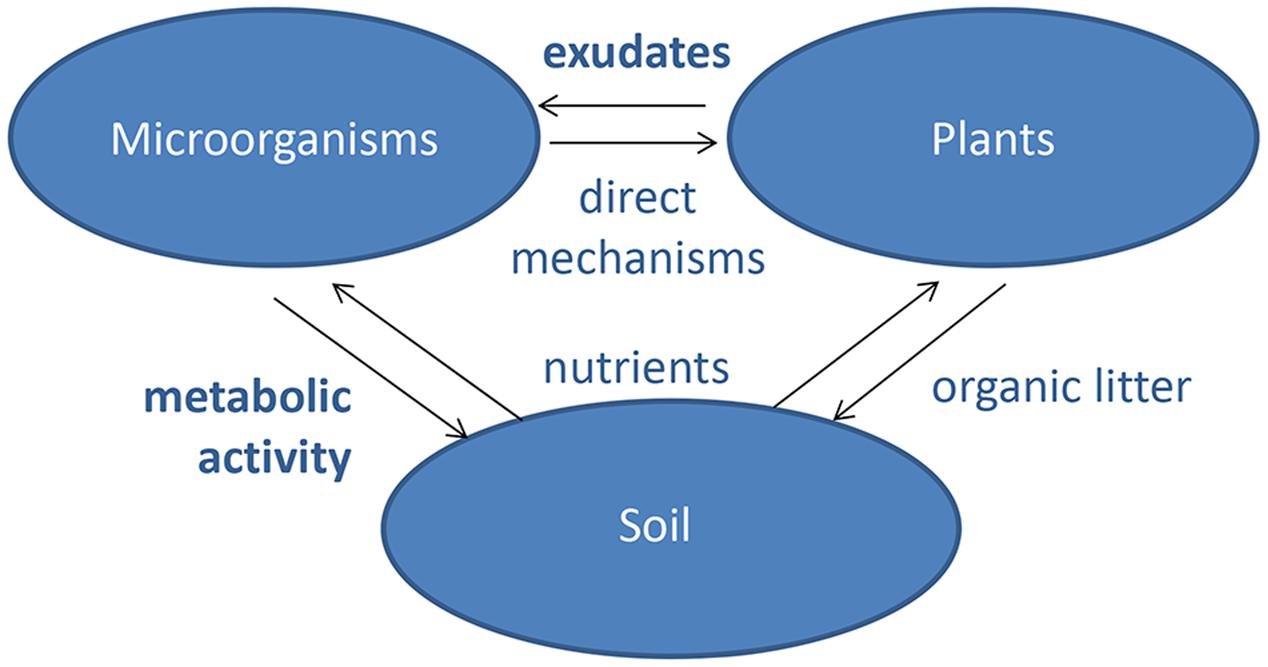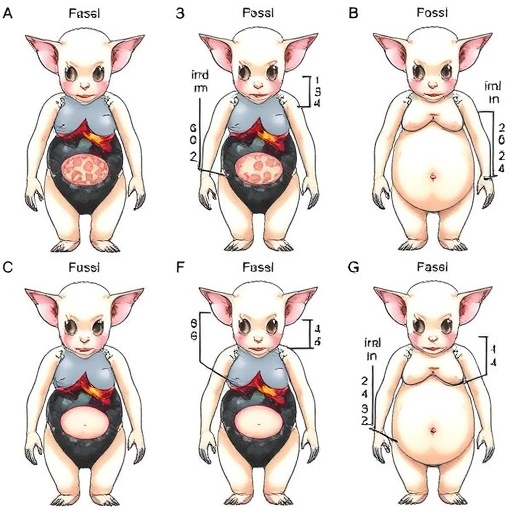Functional regimes define soil microbiome response to environmental change – Nature

Report on Soil Microbiome Responses to Environmental Change and Implications for Sustainable Development Goals
Executive Summary
The metabolic activity of soil microbiomes is fundamental to global nutrient cycles, underpinning the achievement of several Sustainable Development Goals (SDGs), including SDG 2 (Zero Hunger), SDG 13 (Climate Action), and SDG 15 (Life on Land). A key challenge is understanding how soil metabolic functions respond to climate-driven environmental perturbations, such as changes in soil pH. This report details findings from a study that combined dynamic measurements of respiratory nitrate metabolism in over 1,500 soil microcosms with mathematical modeling to reveal predictable functional regimes that govern soil responses to environmental change. A minimal model, defined by two parameters—biomass activity and growth-limiting nutrient availability—successfully predicted nitrate utilization dynamics across a range of soils and pH perturbations. The analysis identified three distinct functional regimes, each governed by different mechanisms:
- Acidic Death Regime: Characterized by suppressed metabolism and cell death under highly acidic conditions, compromising soil health and productivity (relevant to SDG 15).
- Nutrient-Limited Regime: Marked by the exploitation of matrix-released nutrients by dominant taxa, representing a baseline state for soil function.
- Resurgent Growth Regime: Driven by the exponential growth of rare taxa in nutrient-rich conditions following large basic perturbations, which can alter nitrogen cycling pathways with implications for water quality (SDG 6) and greenhouse gas emissions (SDG 13).
These model-derived mechanisms were validated through nutrient measurements, amendment experiments, and microbial sequencing. The existence of these functional regimes was found to be a generalizable feature across diverse soil types, offering a powerful framework for predicting the impact of environmental change on critical ecosystem services.
The Role of Soil Health in Achieving Sustainable Development
Soil Microbiomes as Engines of Global Nutrient Cycles
The metabolic activities of soil microbiomes are central to the carbon and nitrogen transformations that sustain global biogeochemical cycles. These processes are vital for maintaining terrestrial ecosystems and ensuring global food security, directly supporting SDG 2 (Zero Hunger) and SDG 15 (Life on Land). However, these microbial communities are increasingly subjected to environmental perturbations, including changes in pH, temperature, and moisture, often stemming from anthropogenic activities and climate change. To predict the effect of climate change on global nutrient cycles and develop mitigation strategies, it is imperative to understand how microbiome metabolism responds to such environmental shifts. This is a critical component of effective climate action, as outlined in SDG 13 (Climate Action).
Challenges in Predicting Microbiome Responses
The immense taxonomic diversity, spatial heterogeneity, and chemical complexity of soils make it difficult to determine how environmental changes affect community metabolism. Large-scale surveys often reveal correlations but cannot establish causality due to confounding environmental factors. This study utilizes a controlled laboratory approach with soil microcosms to overcome these limitations. By focusing on pH—the environmental variable most strongly correlated with soil microbiome composition and metabolism—the research provides mechanistic insights into community responses. The study specifically targets anaerobic nitrate respiration, a key process in the nitrogen cycle with profound implications for agriculture, climate, and water quality (SDG 6: Clean Water and Sanitation).
Methodology: Modeling Soil Responses to pH Perturbations
To dissect the complexity of soil ecosystem responses, this study employed a multi-faceted approach combining high-throughput experimentation with mathematical modeling.
- Soil Microcosm Experiments: Over 1,500 soil microcosms were created from 20 topsoils with varying native pH levels. These were subjected to 13 different laboratory-induced pH perturbations to simulate environmental stress.
- Metabolic Measurement: The dynamics of nitrate utilization were measured over a four-day anaerobic incubation period. This process is central to the nitrogen cycle, influencing both soil fertility (SDG 2) and the release of nitrous oxide, a potent greenhouse gas (SDG 13).
- Consumer-Resource Model: A simplified mathematical model was developed to describe the observed nitrate dynamics. The model effectively reduces the complexity of the entire microbial community to a single functional biomass and its interaction with two key resources: nitrate and a growth-limiting nutrient (identified as carbon).
- Parameter Inference: The model was fit to the experimental data to infer two critical parameters for each condition:
- Initial Biomass Activity: Reflects the metabolic capacity of the pre-existing nitrate-reducing microbial community.
- Limiting Nutrient Availability: Represents the quantity of available nutrients that constrain microbial growth.
- Validation: Model predictions were rigorously tested and validated using 16S rRNA amplicon sequencing, direct nutrient measurements, and targeted nutrient amendment experiments.
Key Findings: Three Functional Regimes of Soil Response
The analysis of model parameters across all experimental conditions revealed that the functional response of soil microbiomes to pH changes can be categorized into three distinct, mechanistically defined regimes. The transition between these regimes is determined by shifts in biomass activity and nutrient availability, providing a predictive framework for understanding ecosystem stability and function under stress.
Regime I: The Acidic Death Regime
Observed under strong acidic perturbations (pH ≤ 4), this regime is characterized by low biomass activity and low nutrient availability. The primary mechanism is widespread cell death, which severely suppresses metabolic functions like nitrate reduction. This has direct negative consequences for soil health and its capacity to support life, undermining efforts related to SDG 15 (Life on Land).
Regime II: The Nutrient-Limiting Regime
This regime occurs under moderate pH perturbations (4 ≤ pH ≤ 8) and is characterized by high initial biomass activity but limited nutrient availability. Key characteristics include:
- Nitrate reduction proceeds at a constant, linear rate.
- Microbial growth is constrained by the availability of a limiting nutrient, which was experimentally identified as organic carbon.
– The rate of nitrate reduction is proportional to the amount of base added, which releases anionic nutrients from soil particles.
This regime represents the typical functioning state of many agricultural and natural soils, where nutrient availability is a key determinant of productivity, a central concern for SDG 2 (Zero Hunger).
Regime III: The Resurgent Growth Regime
Observed under strong basic perturbations (pH ≥ 8), this regime is marked by low initial biomass activity but high nutrient availability. The defining mechanism is the rapid, exponential growth of initially rare taxa, primarily from the Bacillota phylum. This is fueled by a massive release of nutrients from the soil matrix under high pH. This shift can alter nitrogen cycling pathways, potentially favoring dissimilatory nitrate reduction to ammonia (DNRA) over denitrification. Such a shift impacts nutrient retention in soils but also has implications for water quality (SDG 6) and greenhouse gas emissions (SDG 13).
Generalizability and Implications for Sustainable Development
A Universal Framework for Soil Response
The existence of these three functional regimes was not limited to a single soil type. Further experiments on soils from different geographical locations and a meta-analysis of previous studies confirmed that the regimes and their underlying mechanisms are generalizable. This provides a robust framework for predicting how diverse terrestrial ecosystems will respond to pH stress, a critical tool for managing land under changing climate conditions.
Connecting Soil Function to the SDGs
This research provides critical insights that directly inform strategies for achieving multiple Sustainable Development Goals:
- SDG 2 (Zero Hunger): By identifying carbon as a key limiting nutrient for nitrate reduction in Regime II, the study highlights the importance of managing soil organic matter to enhance nutrient cycling and maintain soil fertility for sustainable agriculture.
- SDG 6 (Clean Water and Sanitation): The model helps predict conditions under which nitrate, a major agricultural pollutant, is processed in soil. The shift to DNRA in Regime III, for instance, could reduce nitrate leaching into groundwater but increase ammonia concentrations.
- SDG 13 (Climate Action): Understanding the drivers of denitrification is crucial for predicting and mitigating emissions of nitrous oxide. This framework allows for better predictions of how climate-induced soil pH changes will affect these emissions.
- SDG 15 (Life on Land): The study demonstrates how environmental stress can lead to catastrophic shifts in microbial community function (Regime I) or dramatic changes in biodiversity (Regime III). It underscores that maintaining soil pH within a stable range (Regime II) is essential for preserving the functional resilience of terrestrial ecosystems.
Conclusion
The complexity of soil microbiomes has long been a barrier to predicting their response to environmental change. This report outlines a powerful approach that combines high-throughput experiments with simplified, mechanistically-grounded models to overcome this barrier. The identification of three distinct functional regimes provides a predictive framework for understanding how soil ecosystems will react to pH perturbations. This knowledge is essential for developing sustainable land management practices, protecting biodiversity, ensuring food security, and taking effective climate action, thereby contributing significantly to the global agenda set forth by the Sustainable Development Goals.
SDGs Addressed in the Article
SDG 15: Life on Land
The article’s core focus is on soil health, microbial biodiversity, and the impact of environmental changes on terrestrial ecosystems, which directly aligns with SDG 15.
- The study investigates “how soil metabolic activity responds to climate-driven environmental perturbations,” which is central to protecting terrestrial ecosystems.
- It examines the effects of soil acidification, a form of land degradation, stating that “The exacerbation of soil acidification correlates with structural and functional succession of the soil microbiome upon agricultural intensification.”
- The research delves into soil biodiversity by analyzing “immense taxonomic diversity” and how perturbations affect microbial composition, such as the shift between Pseudomonadota, Bacteroidota, and Bacillota phyla.
SDG 2: Zero Hunger
The research is set in an agricultural context and explores factors crucial for sustainable agriculture and soil quality, linking it to SDG 2.
- The soil samples were taken from the “Cook Agronomy Farm (CAF),” a “long-term agricultural research site.”
- The study discusses how “long-term variation in soil pH arises from agricultural practices” and the impact of “ammoniacal fertilizers,” which are key components of modern food production systems.
- By understanding soil nutrient cycles, specifically “anaerobic nitrate respiration, a central process in nitrogen cycling,” the research provides insights that can help improve land and soil quality for resilient agricultural practices.
SDG 13: Climate Action
The article explicitly frames its research challenge within the context of climate change, connecting its findings to SDG 13.
- The abstract states that “Understanding how soil metabolic activity responds to climate-driven environmental perturbations is a key challenge.”
- The main text reiterates the need “to predict the effect of climate change on global nutrient cycles” by understanding how microbiome metabolism responds to environmental change.
- The study of functional regimes provides a framework for understanding the resilience and adaptive capacity of soil ecosystems to climate-related hazards like changes in pH and temperature.
SDG 6: Clean Water and Sanitation
The article’s focus on nitrate reduction has direct implications for water quality, as nitrate is a significant pollutant, linking the study to SDG 6.
- The study centers on “anaerobic nitrate respiration,” noting that nitrate has “critical implications for agriculture and climate.”
- Excess nitrate from agricultural soils can leach into groundwater and surface water, causing pollution. Understanding the microbial processes that reduce nitrate, such as denitrification and DNRA, is crucial for managing this form of water pollution.
SDG 9: Industry, Innovation, and Infrastructure
The study represents an advancement in scientific research and methodology, which aligns with the goal of fostering innovation.
- The research develops a novel approach by combining “high-throughput soil microcosm experiments and mathematical models” to understand complex ecosystem responses.
- The development of a “minimal model with two parameters, biomass activity and growth-limiting nutrient availability,” to predict nitrate dynamics is a significant scientific innovation that can be applied to other environmental studies.
Specific SDG Targets Identified
Under SDG 15: Life on Land
-
Target 15.3: By 2030, combat desertification, restore degraded land and soil, including land affected by desertification, drought and floods, and strive to achieve a land degradation-neutral world.
The article directly addresses this target by studying soil acidification, a major form of soil degradation. It mentions that “long-term variation in soil pH arises from agricultural practices” and investigates how these changes impact the soil’s functional capacity. The identification of “functional regimes” provides a method to assess the state of the soil ecosystem and its response to degradation pressures like pH change.
-
Target 15.5: Take urgent and significant action to reduce the degradation of natural habitats, halt the loss of biodiversity and, by 2027, protect and prevent the extinction of threatened species.
The research analyzes the impact of pH perturbations on soil microbial biodiversity. It finds that extreme pH changes lead to an “acidic death regime marked by cell death and suppressed metabolism” and shifts in community composition, such as the decline of dominant taxa (Pseudomonadota and Bacteroidota) and the rise of rare taxa (Bacillota). This provides insight into how environmental stress can cause a loss of microbial biodiversity.
Under SDG 2: Zero Hunger
-
Target 2.4: By 2030, ensure sustainable food production systems and implement resilient agricultural practices that increase productivity and production, that help maintain ecosystems… and that progressively improve land and soil quality.
The study is conducted on soils from an agricultural research farm and examines the effects of agricultural practices like fertilizer use on soil pH and nutrient cycling. By modeling how “the soil microbiome to changes in pH can be categorized into three mechanistically distinct regimes,” the research offers a framework to assess and manage soil quality, which is fundamental to creating resilient agricultural systems.
Under SDG 13: Climate Action
-
Target 13.1: Strengthen resilience and adaptive capacity to climate-related hazards and natural disasters in all countries.
The article investigates the resilience of soil microbiomes to “environmental perturbations including changes in temperature, pH, moisture, oxygen and nutrients stemming from natural and anthropogenic events.” The concept of functional regimes and the pH thresholds at which they transition helps to quantify the adaptive capacity of these ecosystems to climate-driven changes.
Under SDG 6: Clean Water and Sanitation
-
Target 6.3: By 2030, improve water quality by reducing pollution… minimizing release of hazardous chemicals and materials…
The study’s focus on “anaerobic nitrate respiration” and the processes of denitrification and DNRA is directly relevant to reducing nitrate pollution. Nitrate is a major agricultural pollutant that degrades water quality. Understanding the microbial mechanisms that remove nitrate from soil, as detailed in the article, is essential for developing strategies to mitigate this pollution.
Indicators for Measuring Progress
For SDG 15 (Targets 15.3, 15.5) and SDG 2 (Target 2.4)
The article implies several indicators that can be used to measure the health, degradation, and quality of soil ecosystems:
- Soil pH Level: The article establishes pH as a critical variable, stating it is “the environmental variable that is most strongly correlated with soil microbiome composition and metabolism.” Measuring soil pH is a direct indicator of soil acidification, a form of degradation.
- Nutrient Concentration and Cycling Rates: The study measures “nitrate utilization dynamics,” “accumulation of ammonia,” and “water-soluble organic carbon (WSOC).” These measurements serve as indicators of the soil’s capacity to cycle nutrients, a key function for both ecosystem health and agricultural productivity.
- Microbial Biomass and Activity: The model parameters x̃(0) (indigenous biomass activity) and γC̃(0) (available limiting nutrient) are quantitative indicators of the soil’s functional state and metabolic potential.
- Microbial Community Composition: The relative abundance of specific phyla, such as “Pseudomonadota and Bacteroidota” versus “Bacillota,” is shown to be an indicator of the soil’s functional regime. The article notes that an “increase in Bacilliota signals regime change,” making it a potential early warning indicator for ecosystem shifts.
For SDG 13 (Target 13.1)
Indicators for resilience and adaptive capacity can be derived from the study’s findings:
- Functional Regime State: The classification of a soil system into one of the three regimes (“acidic death,” “nutrient-limiting,” or “resurgent growth”) serves as a qualitative indicator of its current response to stress.
- pH Thresholds for Regime Shifts: The specific pH value at which a soil transitions between functional regimes is a quantitative indicator of its resilience. The article notes that “the pH at which regime transitions occur varies according to the long-term pH of the soil,” suggesting this threshold is an indicator of local adaptation.
For SDG 6 (Target 6.3)
The primary indicator for water quality improvement mentioned in the article is:
- Nitrate Concentration: The “dynamic measurements of respiratory nitrate metabolism” provide a direct measure of a key pollutant. The rate of nitrate reduction can be used as an indicator of the ecosystem’s service in mitigating nutrient pollution.
Summary Table of SDGs, Targets, and Indicators
| SDGs | Targets | Indicators Identified or Implied in the Article |
|---|---|---|
| SDG 15: Life on Land | 15.3: Combat desertification and restore degraded land and soil. 15.5: Halt biodiversity loss. |
|
| SDG 2: Zero Hunger | 2.4: Ensure sustainable food production and resilient agricultural practices that improve soil quality. |
|
| SDG 13: Climate Action | 13.1: Strengthen resilience and adaptive capacity to climate-related hazards. |
|
| SDG 6: Clean Water and Sanitation | 6.3: Improve water quality by reducing pollution. |
|
| SDG 9: Industry, Innovation, and Infrastructure | 9.5: Enhance scientific research and encourage innovation. |
|
Source: nature.com

What is Your Reaction?
 Like
0
Like
0
 Dislike
0
Dislike
0
 Love
0
Love
0
 Funny
0
Funny
0
 Angry
0
Angry
0
 Sad
0
Sad
0
 Wow
0
Wow
0


























.png.webp?itok=oUrWXcvl#)

:focal(2620,1821)/https://media.globalcitizen.org/60/0a/600a77ce-594c-49ce-b428-dd977e3d2328/d4_csdw_thailand_2149_1.jpg?#)


















































